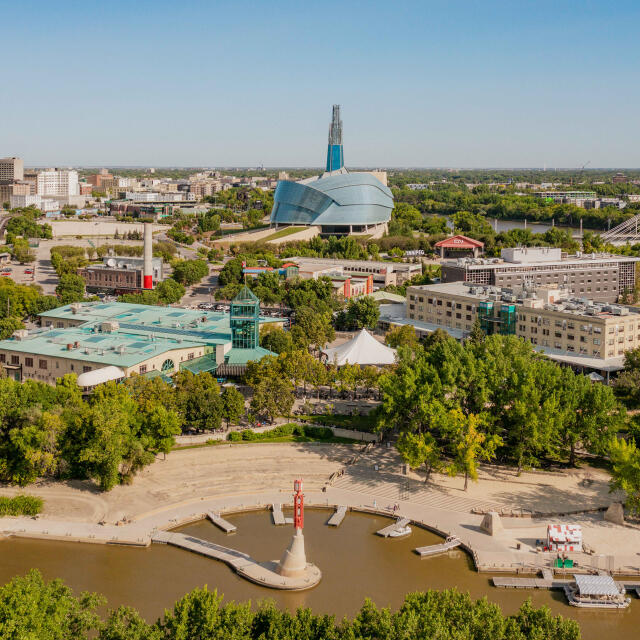All You Need To Know About Winnipeg, Canada, For Your Trip
After the golden age of the early 20th century reflected in its magnificent Art Nouveau skyscrapers, Manitoba’s capital is now returning to its indigenous roots and cosmopolitan identity.
The clamor of wheat traders died down long ago. Once lured by the promise of jobs or new farmland given by the Canadian government for a few dollars, the hustle and bustle of immigrant families from all over Europe and Eastern Canada is a thing of the past.
A sepulchral silence reigns in Union Station, Winnipeg’s train station, now open only a few hours a week for the arrival and departure of the rare trains making up the Toronto-Vancouver line. Yet beneath the blue and gold vaulted ceiling of the huge and now deserted concourse, you can still imagine hearing the hubbub of the pioneers who made this small Manitoba city the beating heart of the Canadian West until the early 20th century.
Read also:The 20 Most Livable Cities In Canada For Newcomers
Changes To UK Visa Requirements: Key Points At-a-glance
Lewis Hamilton Appeal Falls On Deaf Ears With F1 Announcement
Samsung Galaxy A55 Design Unveiled: Leaked Images Provide Early Look Ahead Of Launch
“Before the First World War, Winnipeg was so dynamic that it was nicknamed the Chicago of the North,” said Susan Ainley, communications manager for the city’s tourism organization.
Union Station, constructed by the architectural firm Warren and Wetmore in 1911, mirrors the design of New York’s Grand Central Station.
It served as the endpoint for three railroad companies crucial to the nation’s industrial growth and westward expansion. Situated midway between the Atlantic and Pacific oceans, in the heart of the
















Post Comment